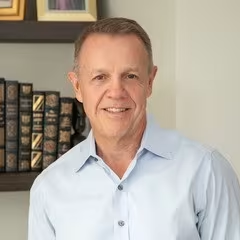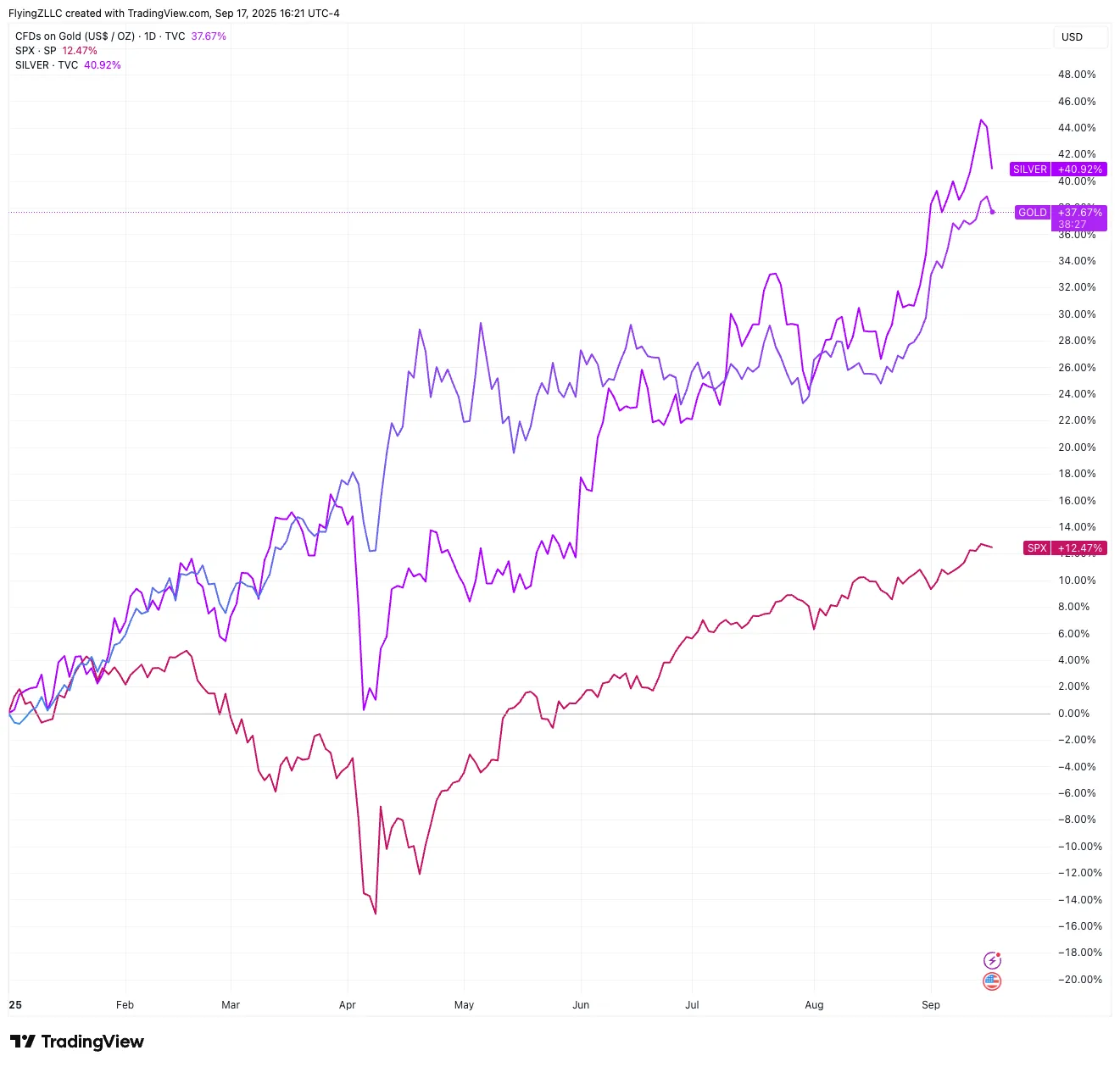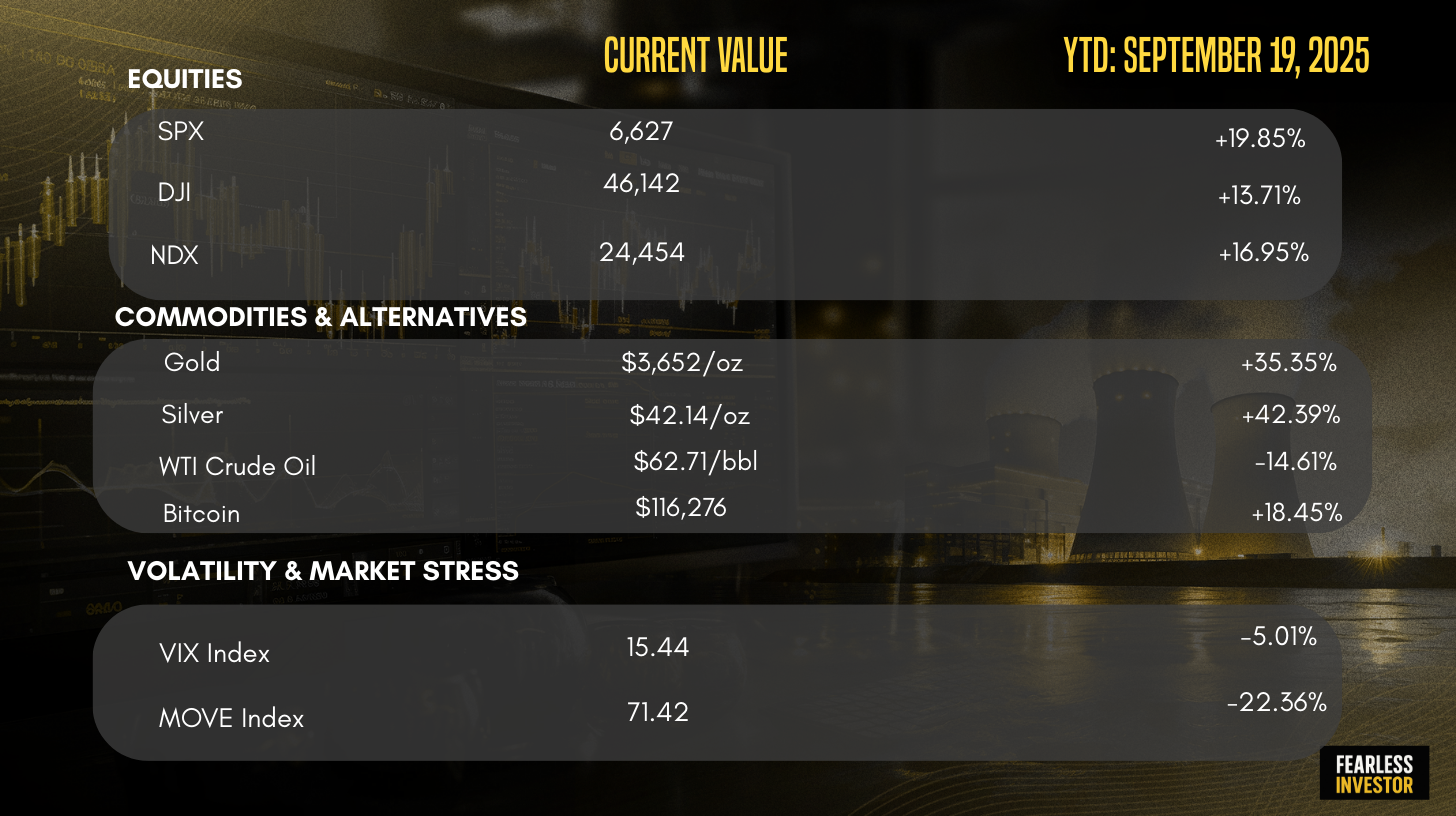Markets Adjust to Policy Drift as Powell’s Successor Nears

Metals outperform, bitcoin cools, and custom silicon reshapes tech leadership amid policy uncertainty
The Calm Is Misleading
Welcome to MacroMashup—your weekly briefing on the real forces driving markets beneath the headlines. If you want disciplined macro analysis, portfolio frameworks, and real-world capital insights, subscribe to receive every deep dive.
Markets spent the week projecting stability. Equity volatility stayed contained. Credit spreads barely moved. Headlines focused on jobs data, health-care politics, and another round of AI bubble arguments.
But beneath the surface, the system is under stress.
Pressure on Maduro just jumped a notch: Trump has ordered a blockade of sanctioned oil tankers in and out of Venezuela while Europe tightens its own sanctions, choking off Caracas’s hard‑currency lifeline and raising the odds of a messy regime crack rather than a choreographed transition. That would be a gift to neighboring economies, and local rates would likely keep grinding lower as risk premia compress.
In Washington, Congress appears ready to leave town without extending enhanced ACA subsidies, setting up a politically manufactured premium shock for millions of households in 2026.
The Fed, for its part, managed to get its labor-market story wrong in under a week: the glide path to 4.5% unemployment sketched at the last meeting has already been mugged by a 4.6% unemployment print, yet another reminder that central bank projections are lagging indicators in forward‑guidance clothing. Markets loved the bad news as a precursor of more cuts ahead, bolstered by this week’s second data point: headline CPI printed softer, which was all the excuse traders needed to lean into a fatter rate‑cut profile for 2026.
The AI “it’s a bubble” bear porn is still good for clicks, but it is missing the only part that really matters for capital allocators: hyperscalers are shifting from self‑funding the capex arms race out of cash flow to tapping debt markets, quietly turning an earnings story into a balance‑sheet and credit‑cycle story that will not treat every member of the Mag 7 the same when someone inevitably overbuilds. This is now a capital‑structure trade, not a vibes‑about‑NVIDIA trade.
If you think AI is a bubble, use your imagination: it’s just getting started. OpenAI may overextend its capital reach, but $0-$12 billion in revenue in three years is breathtaking.
And in the background, one ounce of silver now buys you a barrel of oil for the first time in decades, a pricing inversion that says as much about the market’s evolving hierarchy of “real” assets as it does about any single commodity trade. When the metals‑for‑molecules ratio looks this weird, it is usually telling you something about the regime, not just the ticker.
None of these stories, on their own, move markets. Together, they point to a familiar pattern: surface calm masking structural strain in the system’s plumbing.
MacroMashup paid members receive full weekly deep dives, portfolio frameworks, and early access to investor-grade analysis. If you want to understand how liquidity, policy, and capital structure actually shape returns, subscribe today. Already subscribed? Enjoy this week’s deep dive into the the real market driver this year and next—liquidity!
.svg)
.svg)
.svg)











.avif)
.svg)
.svg)



